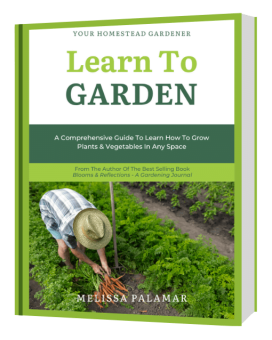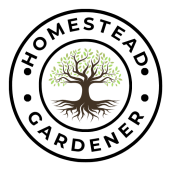
Disclosure: Your Homestead Gardener is a participant in the Amazon Services LLC Associates Program. I earn from qualifying purchases. This means that if you click on a link and make a purchase, I may earn a small commission at no extra cost to you. Thank you for supporting Your Homestead Gardener!
Last Frost Dates & Mastering the Gardening Calendar
Greetings fellow green thumbs! As we stand on the cusp of a new growing season, the excitement bubbling within us is palpable. However, before we dive headfirst into the thrill of nurturing life from seed to harvest, let’s take a moment to understand the intricacies of seed starting.
Together, we’ll unravel the mystery of the “last frost date” and explore the nuances of autumn planting, all while understanding the subtle interplay between this pivotal date, hardiness zones, and the virtues of patience.
The Significance of the Last Frost Date
For those of us new to the gardening game, the term “last frost date” might sound like an arbitrary weather statistic. In reality, it’s a critical piece of information that can make or break your gardening endeavors. The last frost date denotes the approximate time when the threat of frost in your region becomes minimal, allowing delicate plants, such as vegetables, to thrive without the risk of damage.
Imagine this date as a beacon guiding you through the calendar, signaling when it’s safe to unleash your seeds and seedlings into the great outdoors. It’s the difference between a flourishing garden and a potential disaster. So, where do you find this magical date? The Farmers Almanac is your go-to resource.
No two seeds are the same when it comes to planting. Once you know your last frost date, you can take a look at your seed packets, and they will advise you when to plant. You will see wording such as: “Start indoors, 6-8 weeks before last frost date”. If your last frost date is May 6th – then work your way back 8 weeks (I always go with the furthest date on the packet) and that gives you the date in which you need to plant those seeds. In this example, you would need to start your seeds the week of March 11. Check the back of each individual seed packet and record the dates of when they should be started. Keep a calendar or set up reminders on your phone to ensure you never miss a date!
Unveiling the Charms of Autumn Planting
While spring usually steals the spotlight in the gardening calendar, autumn quietly offers a secret window of opportunity. Planting certain varieties of plants and bulbs during the fall, well before the first frost, can be a strategic move that pays dividends in the coming spring.
Why the autumn planting love affair? As temperatures cool, the soil retains its warmth, creating an ideal environment for root development. Planting in the fall allows your green companions to establish sturdy root systems, giving them a head start for the vibrant growing season ahead. Think of it as a garden version of getting a head start in a race – an investment that reaps rewards when the starting gun sounds in the spring.
Some plant varieties particularly thrive when nestled into the earth during this season, establishing strong roots for a vibrant display come spring. Bulbs, such as tulips and daffodils, are classic fall favorites, adding a burst of color to your garden when the warmer days return.
Perennials like peonies and irises also benefit from a fall start, allowing them to acclimate to their new home and bloom more vigorously in the following growing season. Garlic, a kitchen staple, is another fantastic candidate for fall planting, with its cloves taking root during the winter months for a robust harvest in late spring or early summer.
By embracing fall as a time for strategic planting, you not only ensure a visually stunning garden but also set the stage for a flourishing landscape in the months to come.
Decoding Frost Dates and Hardiness Zones
As budding horticulturists, it’s crucial to recognize that the last frost date is just one piece of the puzzle. Equally significant is understanding your hardiness zone, a concept often confused with the last frost date.
Your hardiness zone is determined by factors such as minimum and maximum temperatures and helps you choose plants that can withstand the climatic conditions specific to your region. The USDA and Canada’s Plant Hardiness Site can guide you in identifying your hardiness zone, complementing your knowledge of the last frost date.
Imagine your hardiness zone as your garden’s personality – its unique climate blueprint. Armed with this understanding, you can curate a garden filled with plants perfectly suited to thrive in your particular microclimate. Together, the last frost date and hardiness zone act as a dynamic duo, empowering you to make informed decisions about what to plant, where to plant it, and when to expect the magical moment when your garden comes to life.
The Virtue of Patience
As gardeners, our spirits soar with the promise of new growth. The thrill of nurturing life from seed to harvest is intoxicating, and the anticipation can make us downright giddy. Yet, in our eagerness to coax seedlings from the soil, we must heed the sage advice of the last frost date.
Spring’s arrival brings with it the temptation to jump the gun, to sow seeds and transplant seedlings prematurely. It’s at this juncture that the virtue of patience becomes our greatest ally. Resisting the urge to rush the process is a lesson every gardener learns – often through trial and error. Trust the guidance provided by your last frost date, and let nature unfold at its own pace.
For our Canadian comrades, the frosty fingers of winter might linger a bit longer, and for our friends in the U.S., the warmth of spring might beckon sooner. Regardless of your geographical location, aligning your activities with the last frost date ensures your garden embarks on the journey to abundance with a solid foundation.
Conclusion
In conclusion, mastering the gardening calendar involves a delicate dance with nature. The last frost date and hardiness zone are your companions in this intricate symphony of seasons, guiding you through the rhythm of growth and dormancy. The allure of autumn planting and the patience to await the perfect moment are the keys to a garden that thrives, not just survives.
As you embark on this green journey, remember that a bountiful harvest is a sweet reward for aligning your efforts with the rhythms of nature. May your garden flourish and may your journey as a gardener be as fulfilling as the bounty it yields.
~Happy gardening!

Want to learn how to grow like a Pro?
Unlock the secrets of a thriving garden! Enter your email below to get your FREE copy of ‘Learn to Garden‘ the essential guide that turns budding enthusiasts into green-thumb maestros. Let’s cultivate your gardening journey together, one leaf at a time!



